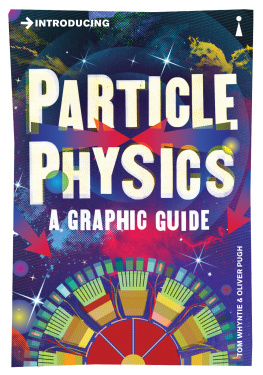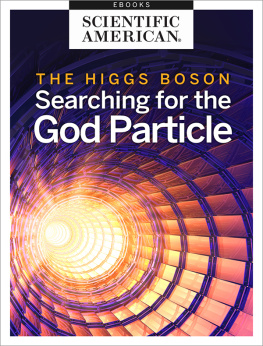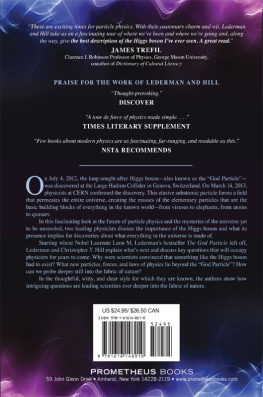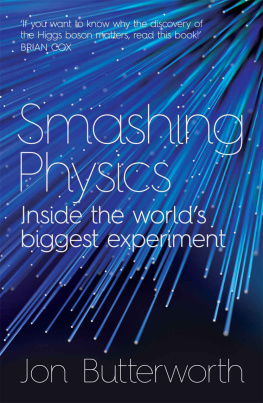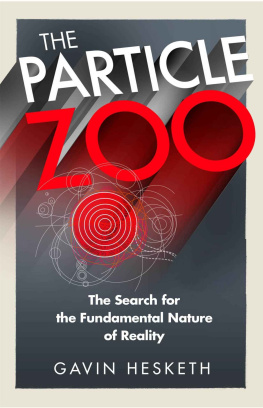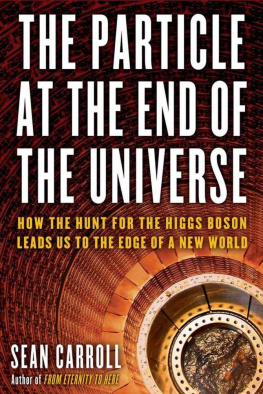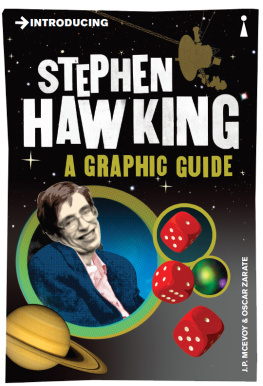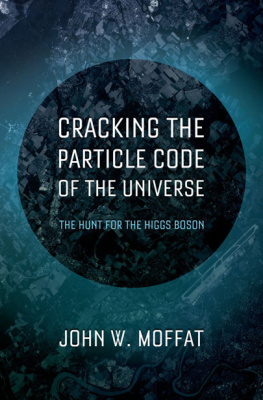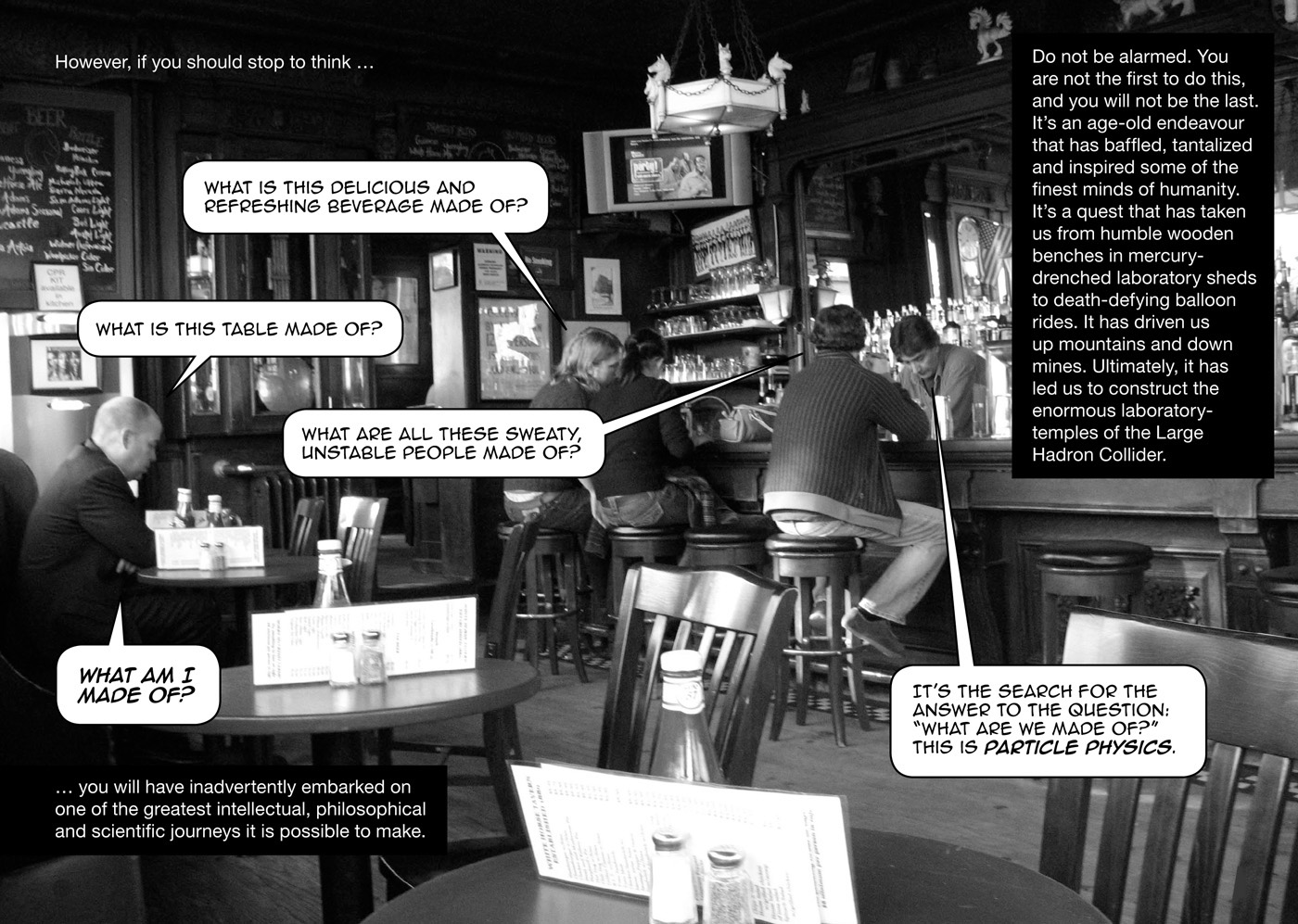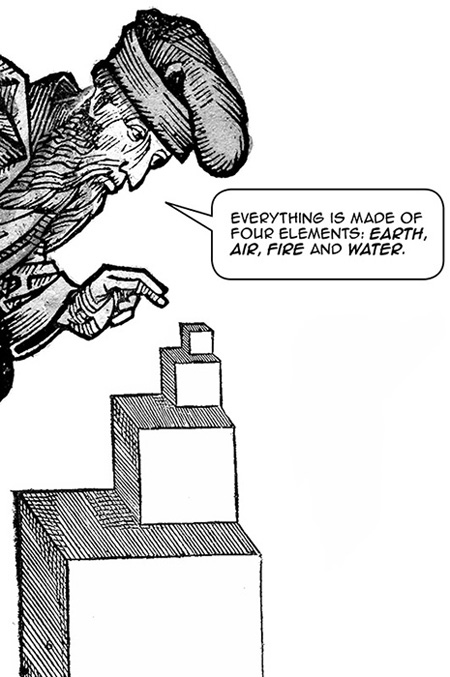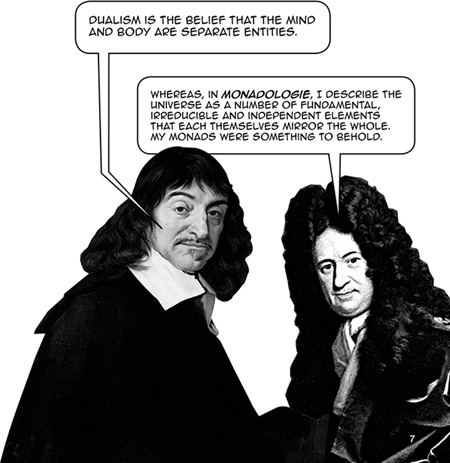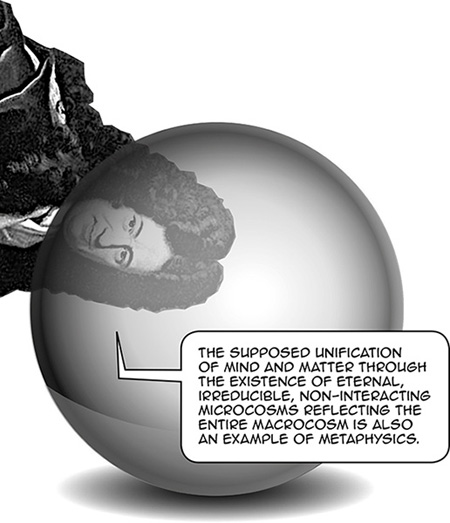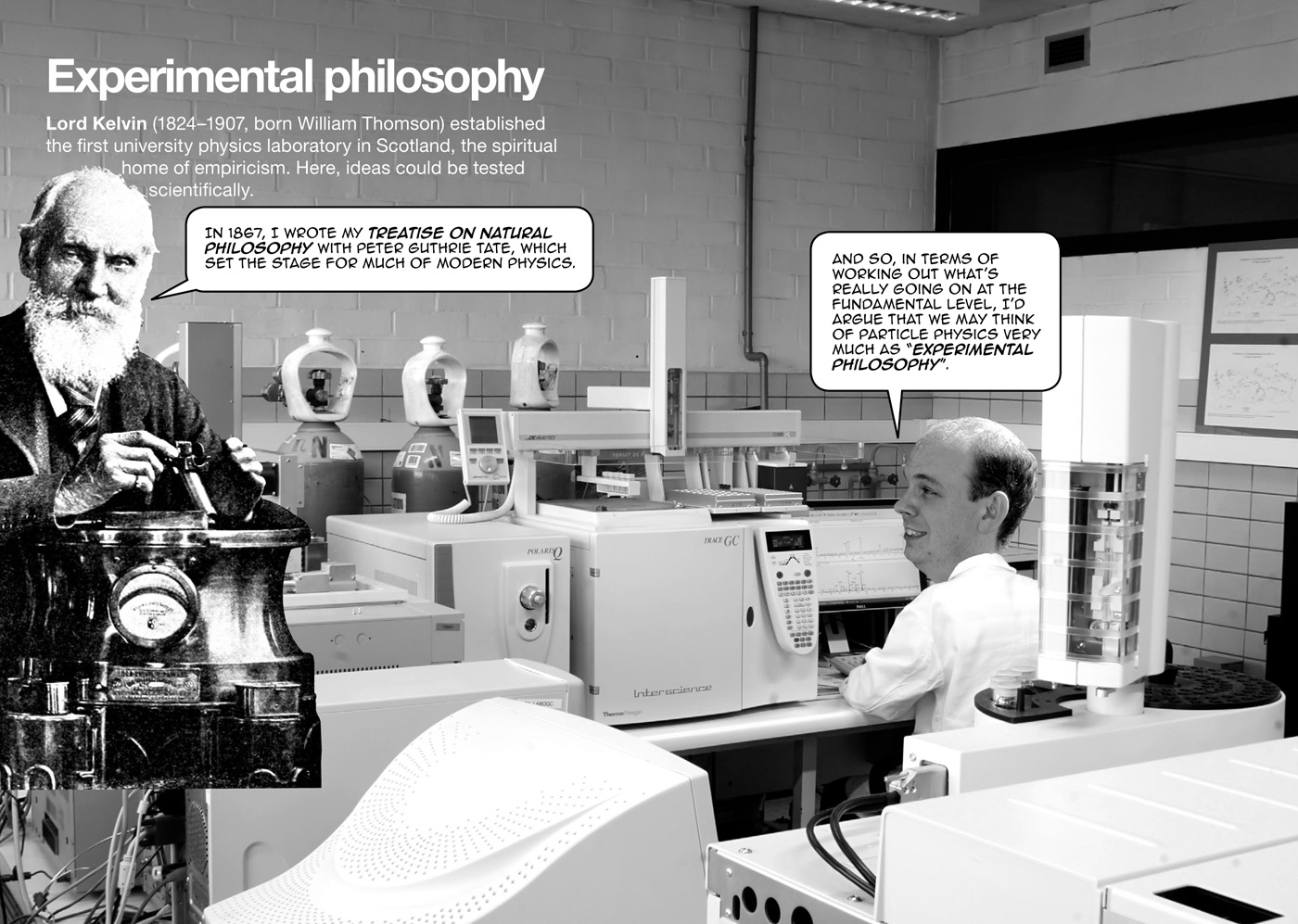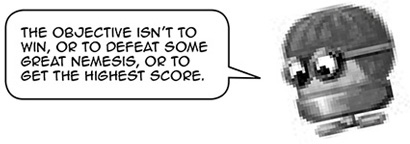Contents
Published by Icon Books Ltd, Omnibus Business Centre, 3941 North Road, London N7 9DP
email:
www.introducingbooks.com
ISBN: 978-184831-764-2
Text and illustrations copyright 2013 Icon Books Ltd
The author and artist have asserted their moral rights.
Edited by Duncan Heath
No part of this book may be reproduced in any form, or by any means, without prior permission in writing from the publisher
What are we made of?
Its probably fair to say that we may live a reasonably enjoyable, profitable, and/or meaningful life without knowing the answer to the question: What is a quark?
YOU DONT NEED TO KNOW THE DIFFERENCE BETWEEN A MUON AND A GLUON TO ORDER AND ENJOY A PINT OF BEER, A GLASS OF WINE OR AN ICE-COLD SOFT DRINK.
AN UNDERSTANDING OF CERENKOV RADIATION WONT HELP YOU NAVIGATE THE LONDON UNDERGROUND SYSTEM AND (FOR BETTER OR WORSE) A FIRM GRASP OF QUANTUM ELECTRODYNAM- ICS ISNT REQUIRED TO PROCREATE.
However, if you should stop to think
you will have inadvertently embarked on one of the greatest intellectual, philosophical and scientific journeys it is possible to make.
WHAT IS THIS DELICIOUS AND REFRESHING BEVERAGE MADE OF?
WHAT IS THIS TABLE MADE OF?
WHAT ARE ALL THESE SWEATY, UNSTABLE PEOPLE MADE OF?
WHAT AM I MADE OF?
ITS THE SEARCH FOR THE ANSWER TO THE QUESTION: WHAT ARE WE MADE OF? THIS IS PARTICLE PHYSICS.
Philosophy: mind and matter
Traditionally, questions like What are we made of? were the domain of philosophers. A famous early attempt at an answer can be found in Platos Timaeus (c. 360 BC).
EVERYTHING IS MADE OF FOUR ELEMENTS: EARTH, AIR, FIRE AND WATER.
Furthermore, these elements were thought themselves to be made of the Platonic solids (the friendliest of the shapes). In Platos theory of everything, earth is made of stackable cubes, the relative compactness of the octahedron lends itself naturally to the air we find all around us, icosahedra flow much as we would expect water to, and the sharpness of the tetrahedron neatly explains why fire hurts when we touch it. (A fifth element, the aether, was added by Aristotle to give perfect, unspoilable substance to the heavens.)
Such a theory may well seem like it was formulated in a pub (or the classical equivalent), but even as late as the 18th century, ideas such as Descartes Dualism (La Description du Corps Humain, 1647) and Leibnizs Monads (La Monadologie, 1714) persisted as seemingly reasonable attempts to describe reality.
DUALISM IS THE BELIEF THAT THE MIND AND BODY ARE SEPARATE ENTITIES.
WHEREAS, IN MONADOLOGIE, I DESCRIBE THE UNIVERSE AS A NUMBER OF FUNDAMENTAL, IRREDUCIBLE AND INDEPENDENT ELEMENTS THAT EACH THEMSELVES MIRROR THE WHOLE. MY MONADS WERE SOMETHING TO BEHOLD.
Metaphysics
With his elements, Plato was trying to understand what the world was made of. Descartes Dualism went further, arguing that the stuff that lets us think is different to the stuff were made of. This division of all things into mind or matter is a great example of metaphysics the branch of philosophy that aims to describe and understand all the aspects of what it means to be.
THE SUPPOSED UNIFICATION OF MIND AND MATTER THROUGH THE EXISTENCE OF ETERNAL, IRREDUCIBLE, NON-INTERACTING MICROCOSMS REFLECTING THE ENTIRE MACROCOSM IS ALSO AN EXAMPLE OF METAPHYSICS.
And as long as all youre doing is a little postulation and pontification, theres nothing wrong with that.
Empiricism
It was with the birth of John Lockes empiricism in the 17th century that thinkers started acknowledging that checking ones ideas against experience might be worthwhile.
INDEED, THE FRENCH FOR EXPERIMENT IS EXPRIENCE.
This conforms to our modern definition of science and the practice of the scientific method. However, until the 19th century science simply meant knowledge. The term natural philosophy was used to describe purely theoretical musings on the workings of the world.
* Words marked with an asterisk are explained in the Glossary on .
Experimental philosophy
Lord Kelvin (18241907, born William Thomson) established the first university physics laboratory in Scotland, the spiritual home of empiricism. Here, ideas could be tested scientifically.
IN 1867, I WROTE MY TREATISE ON NATURAL PHILOSOPHY WITH PETER GUTHRIE TATE, WHICH SET THE STAGE FOR MUCH OF MODERN PHYSICS.
AND SO, IN TERMS OF WORKING OUT WHATS REALLY GOING ON AT THE FUNDAMENTAL LEVEL, ID ARGUE THAT WE MAY THINK OF PARTICLE PHYSICS VERY MUCH AS EXPERIMENTAL PHILOSOPHY.
We have come a long way since the time of brilliant individuals working in what were little more than sheds in the grounds of universities. Experiments at the frontiers of our knowledge now need investments of millions if not billions of dollars in Bond villain-esque facilities and equipment, and world-wide networks of computing power for data storage and processing.
And yet, in many ways, modern particle physics retains the spirit of metaphysics. It probes our concept of what is real. One may complain that its unfair to stunt the creativity of the human imagination by testing its musings against something as trivial as reality. I prefer to think of it just as working out, as best we can, whats really going on. So far, by testing our ideas with experiments, we have witnessed the triumph of matter over mind.
Figuring out the code
The great Richard Feynman (191888), who shared a Nobel Prize in Physics for his contributions to experimental philosophy, once described science as like trying to figure out the rules of chess by watching a game being played.
The journey described in this book is perhaps more akin to that of a group of characters in a computer game.

